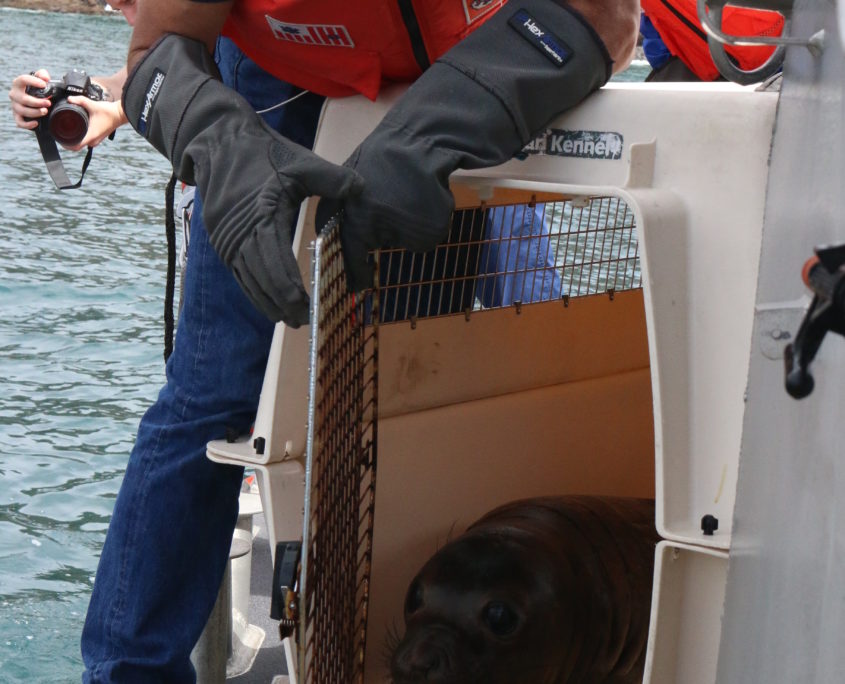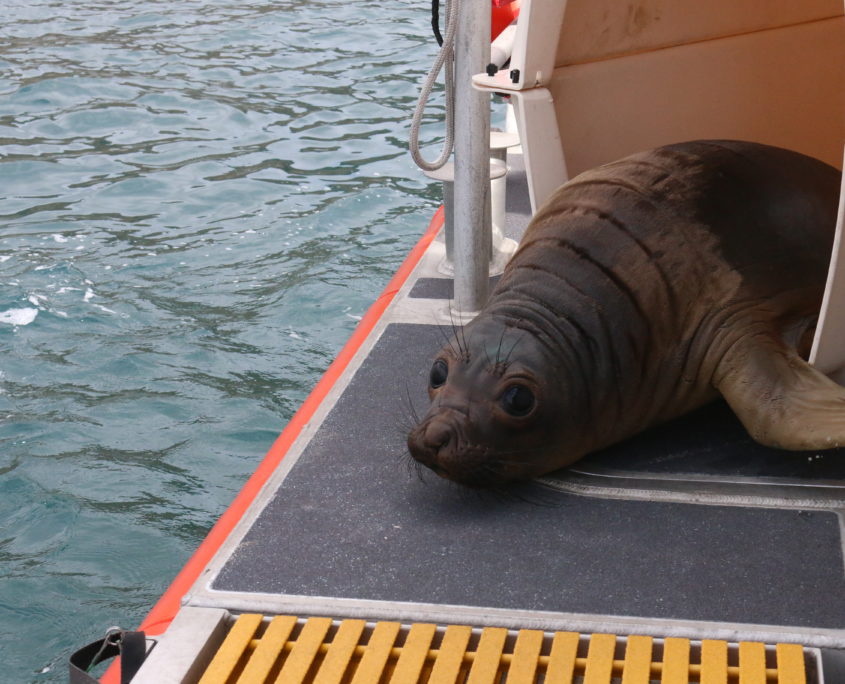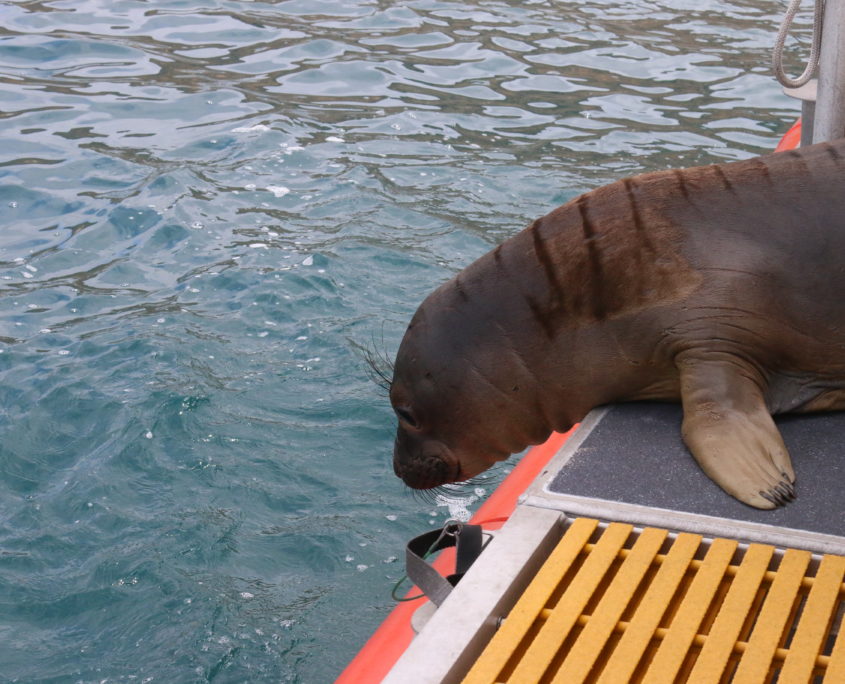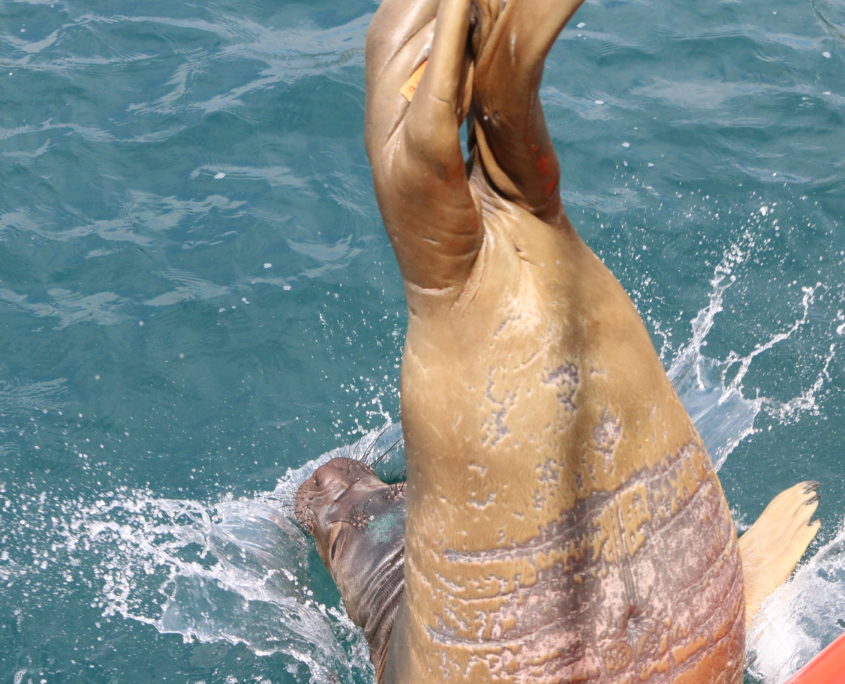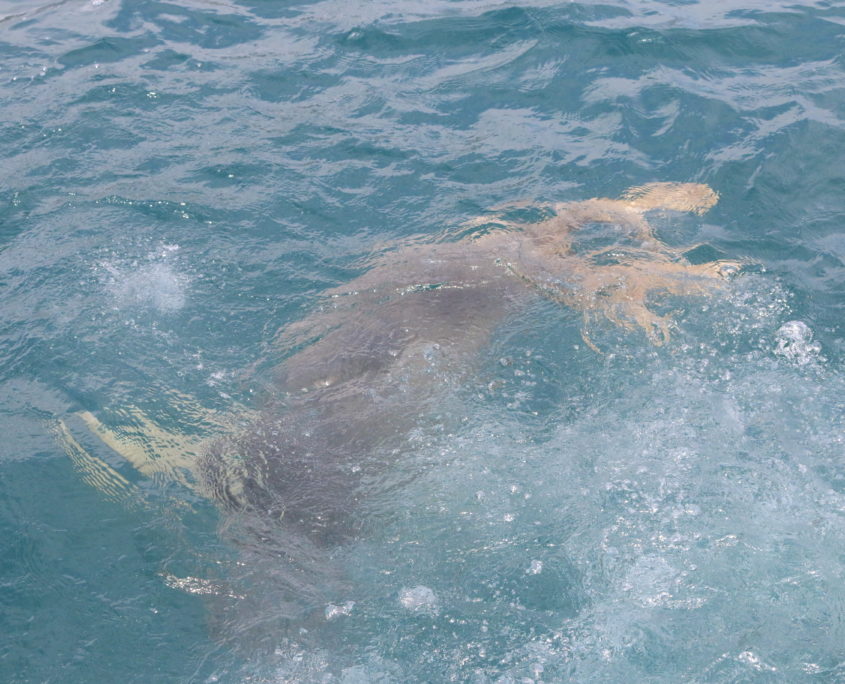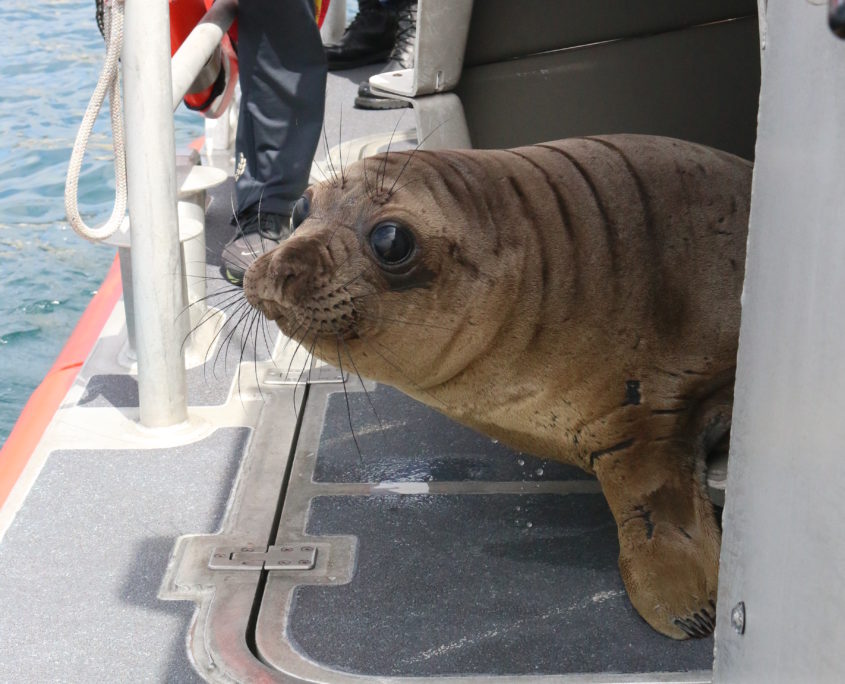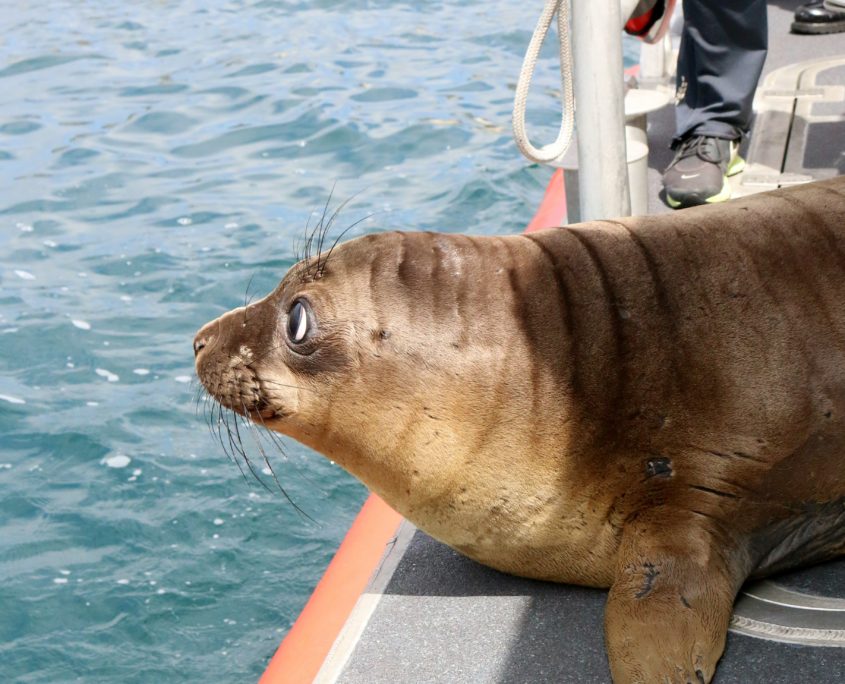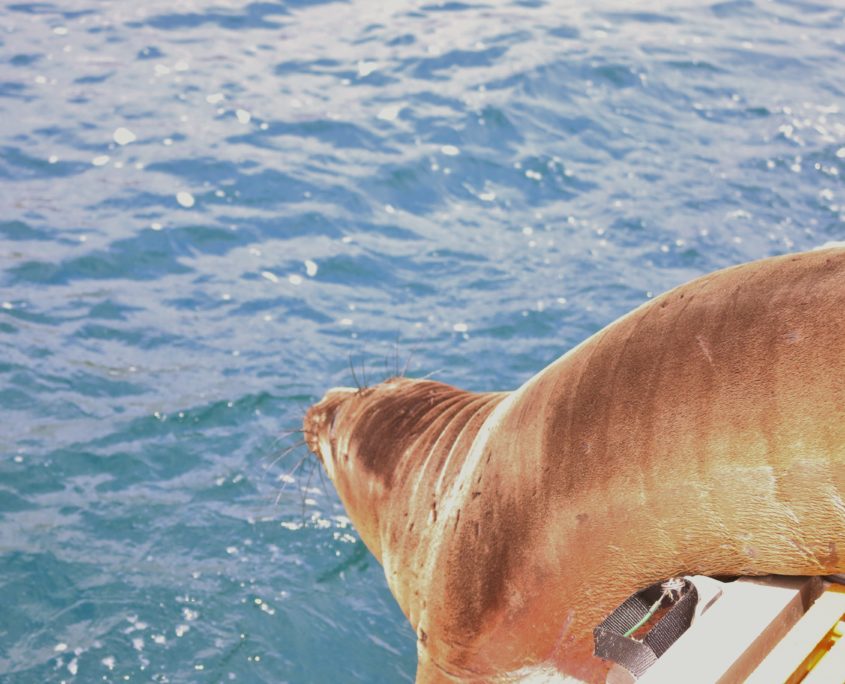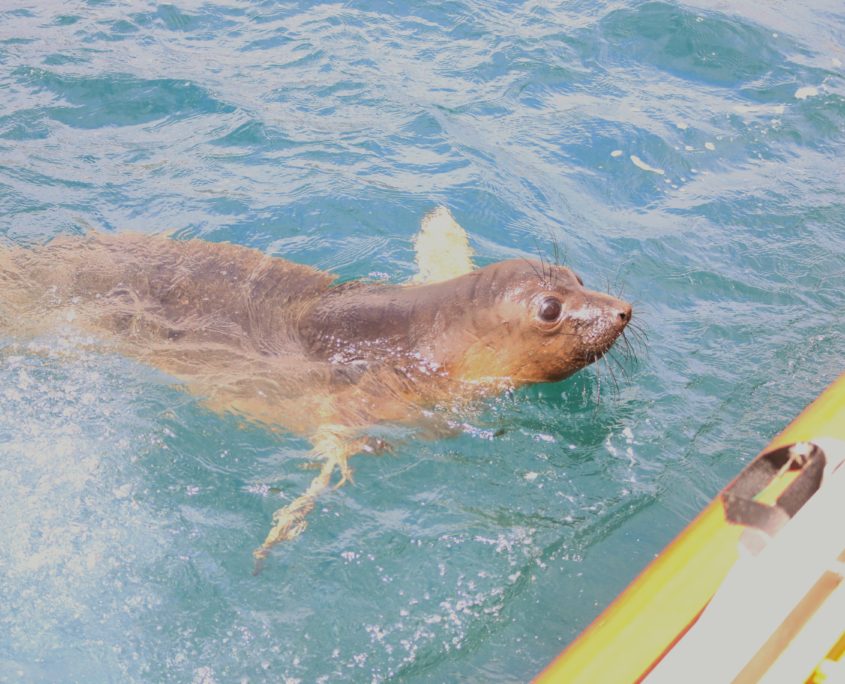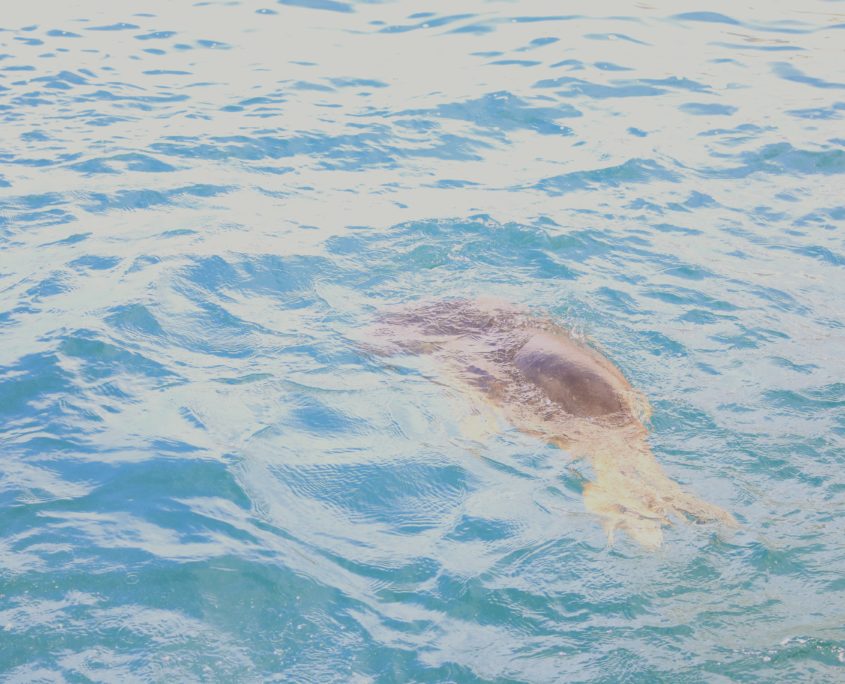Two Elephant Seals Released to Wild with Help of Coast Guard
By Michael Remski, Marine Mammal Rehabilitation Manager
Every year seems to bring us at least one particularly tricky case. This year, both elephant seal pups referred to as “Green” and “Orange” would fit that description. Both animals came in at the very beginning of the stranding season around the first week of March. Ideally, they would be released within 2 months, but both had much longer rehabilitations (around 4 months). Longer time in rehab means more habituation, and more likelihood of the released animal seeking out food from people, rather than hunting on their own.
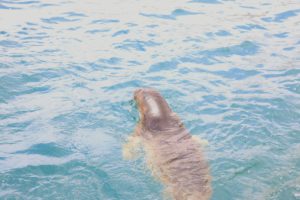
“Orange” swims out to sea after being released off the coast of Santa Cruz Island
After Green’s rehabilitation was complete, he was released into his natural environment, but never left Malibu. He was spotted on different local beaches dangerously close to the public. We rescued Green (again), 2 weeks later. The weight he had lost since release indicated that Green was not finding or hunting for fish but rather hoping for handouts onthe beach. Releasing him near Santa Cruz Island in waters where fish are more abundant (and people are not), would give him the best chance at returning to natural instinctual behavior.
Orange was very small when she was rescued, and it took longer for her to reach the optimum weight for release. Although we had not attempted to release Orange on the beaches in Malibu, because of her extensive time in rehab, the probability of her mimicking Green’s behavior was quite high.
On July 12th, the US Coast Guard was kind enough to give both of these seal pups (along with 3 of their caretakers) a ride out to the channel islands. Green and Orange successfully made their way off the Coast Guard vessel in a secluded cove on Santa Cruz island known as “Smugglers Cove”. This cove is only 20 miles off the mainland, directly out from Oxnard, but the clear water, abundant fish, and absence of human dwelling, gives it the atmosphere of being hundreds of miles from civilization. This seclusion should give the pups the greatest opportunity to thrive in their natural environment.
Click below for more photos.

